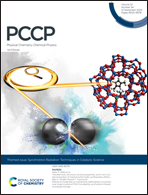Thickness-dependent elastic strain in Stranski–Krastanow growth
Abstract
In this paper, we comprehensively consider the effect of the dependence of elastic strain on the thickness of deposited material on the formation of two-dimensional layers and quantum dots by the Stranski–Krastanow mechanism. The nucleation and growth of germanium quantum dots on silicon surface (100) are used as a model system for conducting experimental studies and theoretical calculations. A detailed dependence of the value of elastic strains on the effective thickness of deposited germanium is obtained. It is also shown that the magnitude of the 1/N superstructural periodicity in this system reaches 12.5%. Based on the obtained thickness dependence of lattice mismatch, a new theory is constructed for calculating the parameters of the formed islands, generalizing previously used thermodynamic models. The equilibrium and critical thicknesses of the wetting layer are determined for the first time under the assumption that lattice mismatch depends on the thickness of the deposited material. In this approximation, some unexpected results are obtained that refine traditional thermodynamic models and confirmed by experimental data. The results of this work and proposed theoretical model may be applied for strain engineering in other material systems where growth of two-dimensional materials and quantum-sized islands by the Stranski–Krastanow mechanism is realized.



 Please wait while we load your content...
Please wait while we load your content...